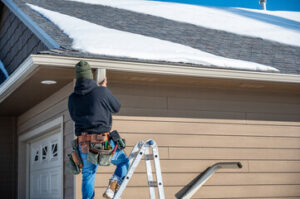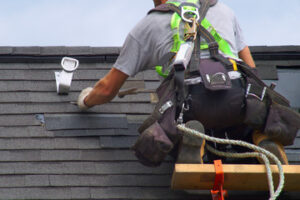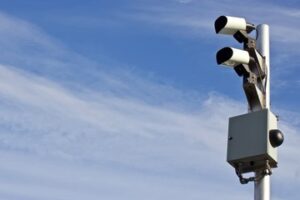Gutters funnel excess water away from roofs and foundations, protecting your home from costly damage. But the effectiveness of gutters depends on proper installation.

For this reason, professional installation is the recommended option. Here are some of the most important DOs and DON’Ts of gutter installation: Ensure that downspouts flow freely. Contact Gutter Installation Gainesville FL for professional help.
Gutters help protect your home from water damage and prevent mold, ensuring that your family has a healthy living environment. They also contribute to the curb appeal of your property, making your house stand out from others and indicating that it has been well maintained. However, gutters must be properly installed for them to perform their functions correctly. This is why hiring a professional is the best option for gutter installation. Professionals have a variety of specialized tools at their disposal to ensure that the job is done right the first time.
The primary responsibility of a gutter system is to channel rainwater away from the roof, walls, foundation, and landscaping of the house. This can prevent mold, leaks, and structural damage. It is important to choose a gutter that is sturdy and can withstand the local weather conditions.
One of the most crucial factors in ensuring that your gutter system is secure is the fasteners used to hold the sections together. These fasteners need to be securely attached and cannot pull loose or come undone. Professionals use a high-quality gutter system with heavy-duty screws or hangers that can resist rust and corrosion. They also use a sealant to prevent water from seeping through the joints and the edges of the gutters.
Another factor that influences the quality of a gutter system is the location of the downspouts. Ideally, downspouts should be placed at least every 40 feet to ensure proper water flow. They should be properly angled to prevent the accumulation of debris in the gutters. Professionals also take into consideration the color and style of your home when determining where to place the downspouts.
Finally, the professional will know how to deal with any issues that may arise during or after the installation process. They will have an in-depth understanding of OSHA guidelines, which will help to create a safe working environment and reduce liability risks. This is an important element of the gutter installation process, and it will allow them to provide their customers with peace of mind.
A & J Reliable can provide a comprehensive gutter system that will protect your home from water damage and improve its aesthetics. We will work closely with you to understand your specific needs and ensure that the process is efficient and stress-free.
Materials
Gutters play a critical role in protecting homes from water damage. While they can be a DIY project, they require a significant amount of preparation and specialized equipment to ensure that the work is done correctly. The wrong materials, improper installation or a poorly executed plan can result in gutter failure and costly repairs.
Gutter components and materials come in a variety of shapes, sizes and colors to match the unique look and character of your home. Some are more resistant to damage or rust than others and each offers its own set of benefits. Aluminum gutters, for example, are lightweight, easy to install and reasonably priced, making them popular with homeowners and contractors. They are also rust-resistant and easily painted to match any home’s color scheme.
Other gutter materials are more expensive but offer superior durability, and may even increase the value of your home. Copper gutters, for instance, can add a distinctive architectural style to your home and will age gracefully over time, enhancing its beauty and value. They are often installed along with chimneys and other architectural features to enhance the overall look of your home.
After gutter channels collect rainwater, downspouts deliver it to the ground and away from the house’s foundation. They are typically placed at the corners of the house. Downspout extensions can be necessary if your landscape slopes towards the house or if you have a basement that’s vulnerable to flooding.
The gutter system itself consists of sections that connect together and are secured to the fascia boards with hangers or brackets. These should be spaced properly to support the weight of the gutters without sagging over time. Gutter sealant can be applied at all connections to ensure a watertight connection.
Depending on the size of your home, you may need additional gutter components such as elbows and end caps. The former are angled pieces that help the gutter flow around the corners of your home. The latter are used to cover the open ends of downspouts, preventing the accumulation of leaves and debris in the gutters.
Timeline
The timeline for gutter installation varies based on the size of your home, roof design, and whether or not you choose to add extra features. These factors can also be impacted by external elements like weather conditions. Having a clear understanding of the timeline will help you plan accordingly and avoid any unnecessary surprises.
Before installing your new gutter system, your roofing contractor will need to inspect the existing system and remove any debris from the site. This process can take between 1 to 4 hours and will likely take longer for larger homes with more complex roof designs. Depending on your preferences, you may want to hire a professional gutter removal service instead of doing the job yourself.
Once the inspection and cleaning are complete, your roofer will begin installing the gutters. The amount of time this takes depends on the size of your home and its complexity, but most standard gutter installations can be completed within a day. If you’re choosing a more premium gutter system like copper or steel, this could add a few days to the project duration due to the heavier materials and additional fastening requirements.
The pitch or steepness of your roof can also affect the installation timeline. A steep roof requires more safety precautions and labor, prolonging the process. In addition, if the roof is difficult to access, it will take more time for workers to reach each gutter section.
Gutters that are positioned closer together will also require more labor to install than gutters that are farther apart. This is because the installers must ensure that each gutter section is properly aligned and secured, which can take more time than a single-story or flat roof.
If you’re opting for gutter guards, these will need to be installed as well, which can also add time to the overall installation. Gutter guards are designed to keep leaves and other debris out of your gutter system, so they must be positioned and attached carefully.
Once the gutters are installed, your roofing contractor will thoroughly inspect them for any damage and make any necessary adjustments. They will also clean up the site and dispose of any old gutters or unused parts, leaving your property looking as good as it did before the project began.
Safety
Gutters collect rainwater and direct it away from the foundation of your home, preventing erosion that can damage the house over time. They also protect the landscaping, siding, and basement from water damage. Without gutters, accumulated water can cause mold and structural problems. Investing in professional gutter installation is an important step towards safeguarding your home from future costs and maintenance.
Proper gutter installation requires accurate measurements of the roofline and proper sizing of materials. You will also need to determine where downspouts should be placed to ensure that water flows properly. In order to get the most out of your gutter system, it is important to have downspouts every 30 to 40 feet. The downspouts should be properly angled so that water flows away from the foundation of your house.
In addition to measuring, you will need a ladder that is sturdy enough for the job and safety gear including a pair of work gloves and safety glasses or goggles. It is a good idea to have someone nearby to assist in case you need to reposition the ladder or get down from it. If you are not comfortable working at heights, hiring a professional gutter installation company is a smart choice.
Gutter installation is a physically challenging task that can be dangerous for inexperienced homeowners. Observing ladder use protocols, such as using the “belt buckle rule” and repositioning the ladder rather than overreaching, can minimize accidents and injuries. The physical fitness and comfort level of the homeowner should also be taken into consideration, as conditions like vertigo or acrophobia can make a project more difficult and dangerous than necessary.



